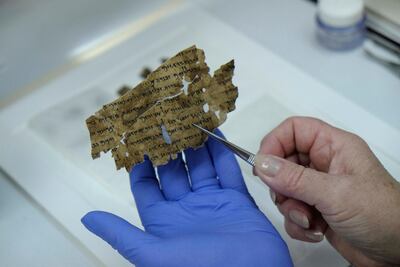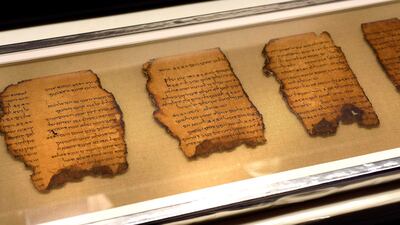Experts have confirmed that a collection of Dead Sea Scroll fragments at the Museum of the Bible in Washington DC are fake.
Art fraud investigators led by Colette Loll concluded that the museum’s entire collection of 16 scrolls are forgeries, likely made from ancient shoe leather. Their findings are compiled in a 200-page report published online.

Ancient manuscripts of the Hebrew Bible dating back to 3rd century BC, the first Dead Sea Scrolls were discovered in 1947 inside the Qumran Caves near the Dead Sea in the West Bank. The majority of these artefacts, which have been deemed genuine, are in the collection of the Israeli government and housed in the Israel Museum.
The fraudulent scrolls, however, were bought by American businessman and billionaire Steven Green between 2009 and 2014 from four individual collectors. He opened the museum in 2017 at the cost of $500 million.
“Each [fragment] exhibits characteristics that suggest they are deliberate forgeries created in the twentieth century with the intent to mimic authentic Dead Sea Scroll fragments,” writes Loll in the report’s summary.
Investigators used scientific techniques such as chemical analysis and 3D microscopy to determine the materials used by forgers. This included the application of animal skin glue to make the leather scraps – likely sourced from the Judean Desert – look like parchment, the material on which the original Dead Sea Scrolls are written.
Researchers in biblical archaeology have warned of the proliferation of fakes in the trade of Dead Sea Scroll fragments, especially after a number of artefacts, approximately 70 in total, popped up in the antiquities market in 2002.

In 2016, scholars published 13 of Green’s 16 fragments in order to determine their characteristic and authenticity. Two years later, it was confirmed by the museum that at least five of the fragments in its collection were fake.
This most recent revelation arrived after the Museum of the Bible decided to subject the rest of the fragments to testing in February 2019.


